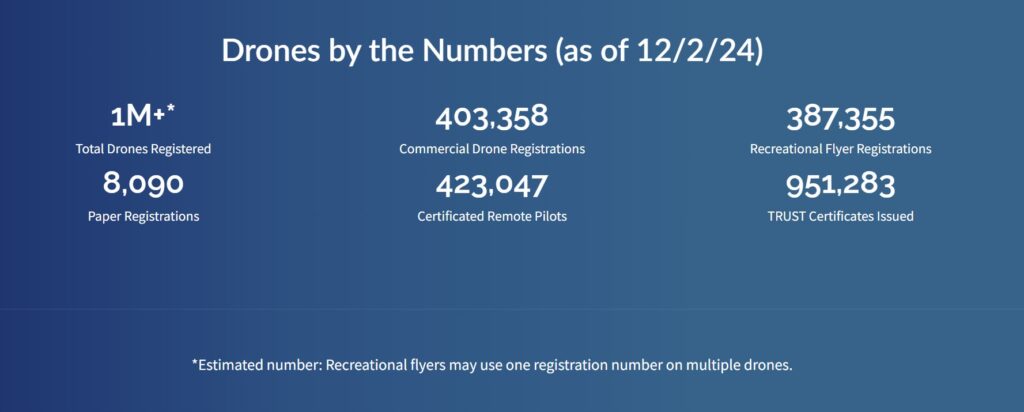Advancements in Drone Technology: Exploring the Future of Flight and Data Integration
The Future of Drones: Balancing Innovation and Regulation
Recent advancements and news headlines highlighting drone technology have been capturing our attention and sparking intrigue. Far beyond their early reputation as flying cameras, modern drones are sophisticated tools equipped with cutting-edge technologies such as artificial intelligence (AI), photogrammetry, surveying, thermal imaging, LiDAR, modern warfare systems, and advanced communication systems with rapid evolution and diverse applications. From new and exciting entertainment options to major advancements in industries across the globe to mysterious appearances of unknown origin, drone technology captivates our imaginations and brings about many questions.
Continuous improvements are enabling drones to perform increasingly complex tasks, from precision agriculture and search-and-rescue missions to large-scale infrastructure inspections and disaster management. Autonomous drones capable of coordinating in swarms are being explored for critical uses like military operations and disaster relief. Additional advancements in battery life and payload capacity will further expand the potential of drones, reshaping industries and opening new frontiers for innovation. There seem to be endless possibilities of how the use of drones can better our world. However, this technological marvel leaves us pondering a critical question: “Drones—friend or foe?”
Regulatory Challenges: FAA Rules Vs. Drone Innovation
While drones promise immense possibilities, their deployment in the United States faces significant regulatory hurdles. The Federal Aviation Administration (FAA) has implemented stringent rules designed to ensure safety and privacy; however, these regulations often fail to keep pace with the rapid advancement of drone technology. Like all technological advances in our rapidly changing global landscape, further developments bring to light new challenges and the need for updated rules and oversights. The regulatory pendulum often swings in technological industries to balance industry risk; however, the exponential growth of use cases and rapid adoption with minimal barriers to entry have caused the pivot to break launching the weight directly at the FAA.
Restrictions such as visual line-of-sight (VLOS) operation, altitude caps, and complex airspace permissions limit the widespread adoption of commercial drones. For example, autonomous drones capable of navigating crowded airspace could revolutionize long-range deliveries and disaster response. Yet, FAA rules frequently prevent their use, stifling innovation in industries eager to leverage drone technology. Recent incidents highlight the importance of effective regulation. In Orlando, Florida, a malfunction involving several drones resulted in one striking and seriously injuring a seven-year-old boy. Such events raise critical questions about whether current safety standards are adequate to address the risks posed by increased drone usage. The challenge faced will be attempting to strike a perfect balance between regulation and innovation, but the technology is simply outpacing the ability of regulators.
The Mystery of Unidentified Drones
Adding a layer of intrigue, reports of unidentified drone sightings across the United States are on the rise. From large drones flying in formation to unexplained appearances near critical infrastructure, these incidents have puzzled authorities and sparked speculation. Could they involve espionage, unauthorized surveillance, or even extraterrestrial activity?
The ambiguity surrounding drone-related incidents emphasizes the critical need for advanced tracking systems and robust detection protocols. These measures are essential to address potential threats and sustain public trust in the safe and responsible use of drones. Although this particular mystery remains unsolved, it serves as a clear reminder that drones are here to stay, with sightings and applications expected to become increasingly common. As this technology continues to evolve, proactive measures to enhance safety and security will be vital in ensuring its integration into daily life benefits society while minimizing risks.
Drones in Modern Warfare: Redefining Conflict and Targeting World Leaders
Drones have become a pivotal tool in modern warfare, redefining the way nations engage in conflict and pursue strategic objectives. Their versatility, cost-effectiveness, and ability to operate remotely make them ideal for surveillance, precision strikes, and even psychological operations. The ongoing conflict between Ukraine and Russia has highlighted the disruptive potential of drone technology. In a dramatic example, Ukraine reportedly utilized drones in an assassination attempt on Russian President Vladimir Putin, underscoring how these devices are changing the calculus of high-stakes military tactics. Such incidents demonstrate how drones can be leveraged to reach previously inaccessible targets, potentially altering the dynamics of power and deterrence. However, they also raise significant ethical, legal, and security concerns, as the ease of deployment and difficulty of attribution could escalate conflicts and blur the lines of accountability in warfare.
Transforming Security with GIS and Drone Integration
One of the most promising applications of drone technology lies in its synergy with Geographic Information System (GIS) mapping. Combining drones with GIS software allows organizations to create precise, real-time maps, enhancing situational awareness and improving decision-making processes.
For instance, drones equipped with thermal imaging can locate intruders, assess damage, or find missing persons. When integrated with GIS, these drones provide exact geolocation data, streamlining resource allocation for law enforcement, disaster relief, and infrastructure security. This powerful combination is revolutionizing how industries approach surveillance and public safety, making drones indispensable tools in maintaining order and responding to crises.
Drone technology is revolutionizing industries by offering unprecedented capabilities, and its integration with digital twinning is taking innovation to the next level. By combining drones’ ability to capture real-time data with digital twins’ predictive modeling, organizations can create highly detailed virtual replicas of physical systems. These tools enhance decision-making, streamline operations, and improve efficiency. However, with this progress comes significant responsibility, particularly in addressing the physical and cybersecurity implications. Protecting sensitive data, preventing unauthorized access, and safeguarding physical infrastructure are critical priorities as these technologies become more interconnected. The future of drone technology lies not only in its technical advancements but also in developing robust security measures to ensure these tools can be deployed safely and effectively in a rapidly evolving landscape.
*To find out more about how digital twins can help your organization, contact us for a complimentary consultation today at https://allieditsystems.com/contact/
Navigating the Path Forward
The potential of drones is limitless, but achieving their full potential requires overcoming several key challenges. Regulatory frameworks must evolve to accommodate the capabilities of modern drones while ensuring safety and privacy. Policymakers, developers, and industry leaders must collaborate to address legitimate concerns about unauthorized use and security vulnerabilities.
By harnessing drones for constructive purposes—such as GIS integration, disaster relief, and large-scale inspections—global society can unlock transformative benefits while maintaining a vigilant eye on safety and ethical considerations. Striking a balance between innovation and regulation will enable drones to achieve their potential, revolutionizing industries and enhancing lives.
As drones continue to advance, they carry the promise of solving pressing challenges while raising essential questions about safety and intent. By addressing these challenges head-on, we can ensure that drone technology remains a force for good, delivering innovation and impact to benefit humanity. Overall, the benefits outweigh the risks, and technology is leading the world into the future. Drones are not going anywhere after all, and their continued abundant proliferation will not be overly offset by regulatory agencies if past performance is any indicator of the future. One could easily imagine thousands Amazon delivery drones carrying packages to front porches, which seems to call for a new and more highly specialized regulatory agency specializing in last mile logistics, perhaps blanketed under Space Force. What would this agency be called? Department of Geospatial Expeditions, perhaps?

Contact Allied IT Systems to discuss our drone services and to schedule a free consultation today.
Copyright Allied IT Systems, 2025
